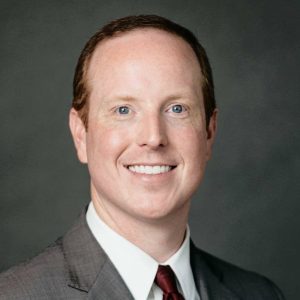In a recently released report, the Kansas Department of Legislative Post Audit found that an economic development tool popular with cities across the state often do not work as intended.
The department evaluated six “Tax Increment Financing” districts across the state to determine if they were working as designed.
In 1976 the Kansas State Legislature authorized cities to create TIF districts. A TIF district, also known as a redevelopment district, is a defined area within a city that uses a tax increment to help fund development.
When a city establishes a TIF district, the assessed valuation of all existing real property located in the district is effectively frozen at a base level. Any subsequent property tax revenue generated above the base level — either from increases to the value of existing property or from the added value of new property — is called the “tax increment.” The development can involve building houses or apartments, renovating retail space, cleaning up environmental contaminants, and more.
The idea is to leverage future tax revenue from value increases to pay for development that might not otherwise have occurred.
There are 114 TIF districts in the most populous cities in Kansas — most in Kansas City, Kansas and Wichita — and Post Audit picked six from across the state for study:
- Melrose (Kansas City): this is an industrial (business and industry) district that was created in 2002. It was completed in 2022.
- College Hill (Topeka): this is a mixed-use district (with a large residential component) that was created in 2006. At the time of the report, it was still active.
- Douglas & Hillside (Wichita): this is a mixed-use district (with a large residential component) that was created in 2006. At the time of the report, it was still active.
- Lambertz (Salina): this is a retail district that was created in 2007. It was completed in 2020.
- Ken Mar (Wichita): this is a retail district that was created in 2008. At the time of the report, it was still active.
- Valley View (Overland Park): this is a retail district that was created in 2010. At the time of the report, it was still active.
Post Audit reviewed project documents and tax records to determine the construction and financing timelines for the selected TIF districts and found that three of the six TIF districts reviewed are not expected to pay off their TIF costs on time or have not generated enough revenue to cover these costs.
All six of the TIF districts reviewed are on track to be at or below estimated costs, but most experienced delays in construction.
Additionally, Post Audit said of the TIF districts they reviewed, cities have incurred between $1.6 and $7 million in direct costs and in at least four of the districts there are significant indirect costs because of and increase in crime.
Moreover, it is difficult for the state to determine the efficacy of TIF districts as — while state law authorizes them — they are administered by local city governments.
TIF districts don’t have the benefits many claim
While Post Audit was at pains to note that six districts is too small a sample size to extrapolate results for all 144 state-wide, Economist Dr. Vance Ginn, a senior fellow at the Kansas Policy Institute — which owns the Sentinel — said in a recent post on the KPI website, that the issue is far more complicated than it might seem.

“The reality of TIF projects is far more complicated, as audits frequently show delays in cost recovery and overestimated economic benefits,” Ginn wrote. “Worse, these government subsidies often crowd out private investment and leave taxpayers footing the bill for developments that may not deliver their promised benefits.”
As an example, Ginn noted the College Hill district — audited by the department — in Topkea.
“The audit for Topeka’s College Hill district revealed that the city is expected to use general funds to cover 40% of project costs — diverting resources from other essential services,” he wrote “This mismanagement highlights a fundamental problem with TIF districts: they often fail to deliver the economic benefits they promise while locking cities into long-term financial commitments.”
Ginn, who was also the former chief economist in the White House Office of Management and Budget also noted that — while the audit was successful at quantifying direct costs to the cities, it “overlooked a more significant issue — the opportunity costs to taxpayers.”
“What if the funds tied up in these TIF projects had remained in the hands of taxpayers instead?” Ginn asked in the column. “Instead of subsidizing developers, that money could have stayed in local pockets, allowing individuals to spend, save, or invest in ways that meet their needs and preferences. This missed opportunity for organic economic growth — driven by individual decisions rather than government intervention — should not be ignored.”
Moreover, Ginn said, the direct costs noted by the audit do not include the additional interest on the debt accumulated when cities use bonds to finance their portion of the projects.
“These costs ultimately fall on taxpayers, as cities must dip into general funds or raise taxes to cover the shortfalls,” Ginn wrote. “Worse, these funds could have been used for other purposes — like lowering taxes or investing in essential public services — if the city had avoided entering into these development deals in the first place.”
Ultimately Ginn said, TIF districts are simply inefficient and expensive.
“The audit of Kansas’s TIF districts reveals deep flaws in the management and outcomes of these projects,” he wrote. “Rather than continuing to gamble on subsidies that rarely deliver, policymakers should focus on spending less and putting more money back into the hands of taxpayers. The costs of TIF districts — direct and in terms of missed opportunities — are too great to ignore.
“A more prosperous future lies in allowing individuals to drive economic growth through their choices rather than relying on government subsidies that pick winners and losers.”



